How to fix “No Internet After Malware Removal” (Free Guide) By Tech #Experts
If you’ve just about completed to cleanup your computer system from malware and you’ve noticed that you are unable to connect to the Internet, then your proxy server or DNS (Domain Name System) settings may have been changed by malware.
It’s very common for some forms of adware to change your proxy server or DNS to add their own malicious address, which will redirect your browser or displaying ads while you’re navigating the Internet. When you remove this type of adware, the malicious DNS server addresses
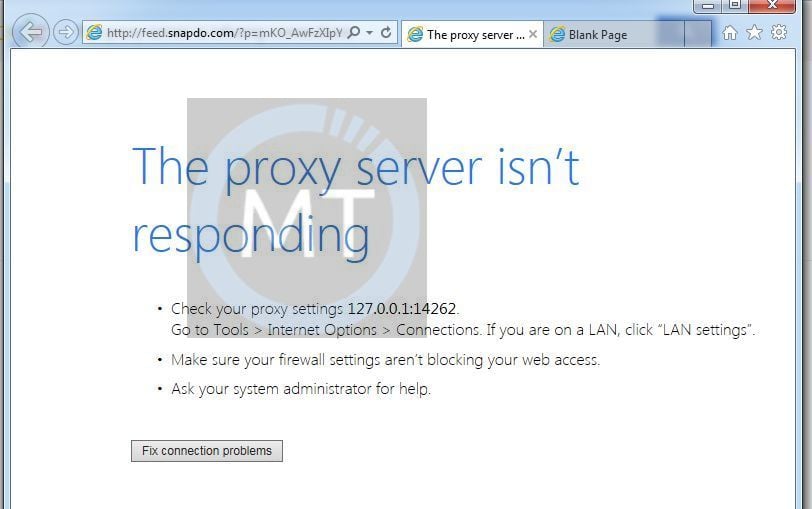
In this guide, we will check if the settings for the proxy and DNS server are as they should be, as this is the most common factor which leads to users not being able to connect to the Internet after malware removal.
How to fix “No Internet After Malware Removal” (Virus Removal Guide)
This page is a comprehensive guide which should restore your Internet access and remove any malicious program from Windows.
Please perform all the steps in the correct order. If you have any questions or doubt at any point, STOP and ask for our help.
Please perform all the steps in the correct order. If you have any questions or doubt at any point, STOP and ask for our help.
STEP 1: Change the proxy server to default settings
STEP 2: Change your DNS to default settings
STEP 3: Reset your browser to the default settings
STEP 4: Scan your computer with Malwarebytes Anti-Malware
STEP 5: Scan your computer with HitmanPro
(OPTIONAL) STEP 6: Scan your computer with Zemana AntiMalware
How to fix “No Internet After Malware Removal” (Free Guide)
If you’ve just finished to cleanup your computer from malware and you’ve noticed that you are unable to connect to the Internet, then your proxy server or DNS (Domain Name System) settings may have been changed by malware.
It’s very common for some forms of adware to change your proxy server or DNS to add their own malicious address, which will redirect your browser or displaying ads while you’re navigating the Internet. When you remove this type of adware, the malicious DNS server addresses will still remain and you will have to manually change it to be able to connect to the Internet.

It’s very common for some forms of adware to change your proxy server or DNS to add their own malicious address, which will redirect your browser or displaying ads while you’re navigating the Internet. When you remove this type of adware, the malicious DNS server addresses will still remain and you will have to manually change it to be able to connect to the Internet.

In this guide, we will check if the settings for the proxy and DNS server are as they should be, as this is the most common factor which leads to users not being able to connect to the Internet after malware removal.
How to fix “No Internet After Malware Removal” (Virus Removal Guide)
This page is a comprehensive guide which should restore your Internet access and remove any malicious program from Windows.
Please perform all the steps in the correct order. If you have any questions or doubt at any point, STOP and ask for our help.
Please perform all the steps in the correct order. If you have any questions or doubt at any point, STOP and ask for our help.
STEP 1: Change the proxy server to default settings
STEP 2: Change your DNS to default settings
STEP 3: Reset your browser to the default settings
STEP 4: Scan your computer with Malwarebytes Anti-Malware
STEP 5: Scan your computer with HitmanPro
(OPTIONAL) STEP 6: Scan your computer with Zemana AntiMalware
STEP 1: Change the proxy server to default settings
Proxy settings are used to tell your computer the network address of an intermediary server (known as a proxy server) that is used between the browser and the Internet on some networks.
By default, your browser automatically detects proxy settings. However, you some new forms of adware might change these settings to their own malicious address, so we will need to manually revert them back to their defaults.
By default, your browser automatically detects proxy settings. However, you some new forms of adware might change these settings to their own malicious address, so we will need to manually revert them back to their defaults.
- Open Internet Explorer by clicking the Start button
 . In the search box, type Internet Explorer, and then, in the list of results, click Internet Explorer. If you are using Windows 10, you can directly search for Internet Explorer from your desktop via the search box.
. In the search box, type Internet Explorer, and then, in the list of results, click Internet Explorer. If you are using Windows 10, you can directly search for Internet Explorer from your desktop via the search box.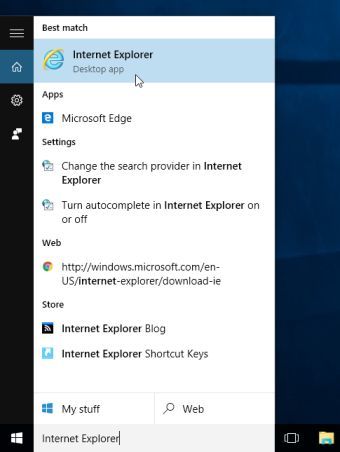
- When Internet Explorer has opened, click on the “gear icon”
 in the upper right part of your browser, then click again on Internet Options.
in the upper right part of your browser, then click again on Internet Options.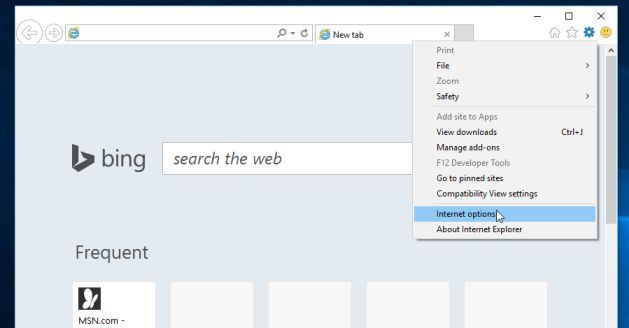
- Click the Connections tab, and then click LAN settings. Next, remove the checkmark from the “Use a proxy server for your LAN” box. Click on the “OK” button to save these settings.
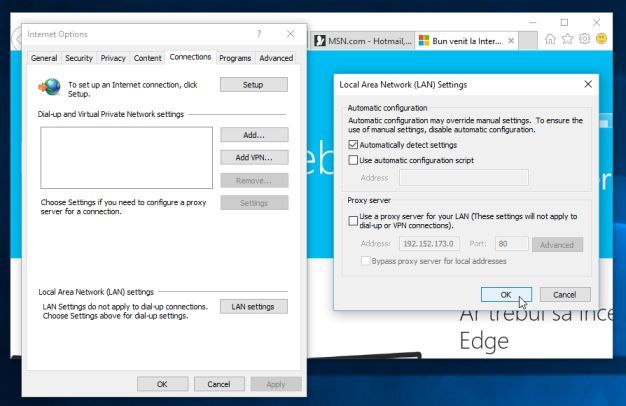
STEP 2: Change the DNS to default settings
- Open the Network and Sharing Centre by right-clicking on your network connections symbol in the bottom-right corner of the screen, then click on Open Network and Sharing Center.
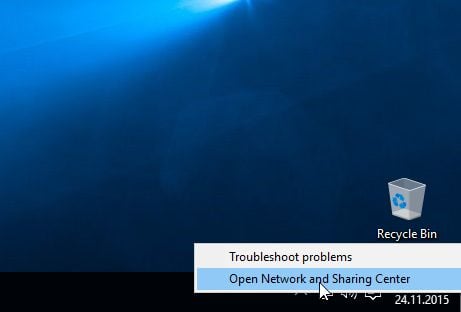
- Click on the connection type. In our example below, this is Ethernet.
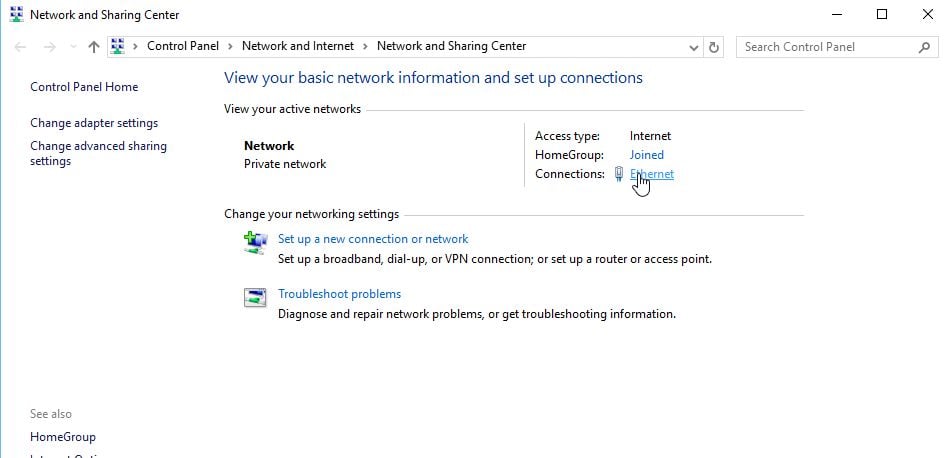
- On the next page, click the Properties button to view your connection properties.
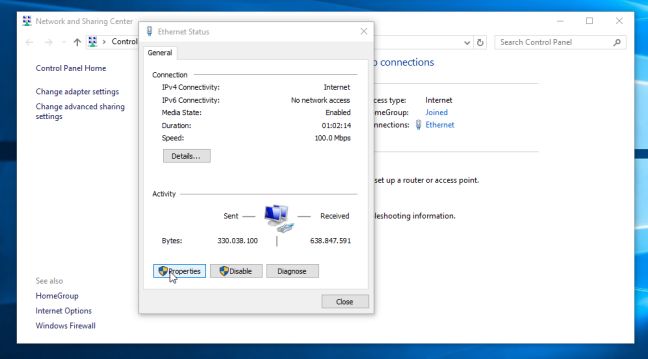
- Click once on Internet Protocol Version 4 (TCP/IPv4) to highlight it, then click on the Properties button again.
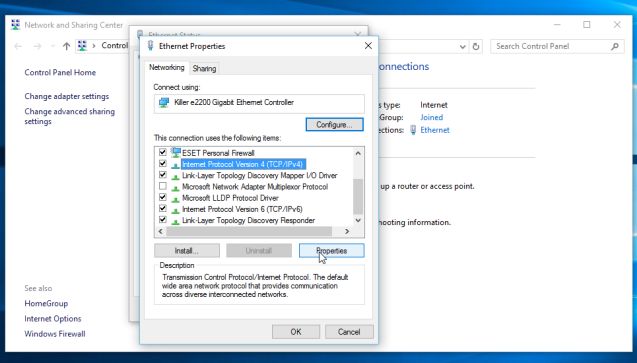
- Click “Obtain an IP address automatically” and “Obtain DNS server address automatically“, and then click OK.
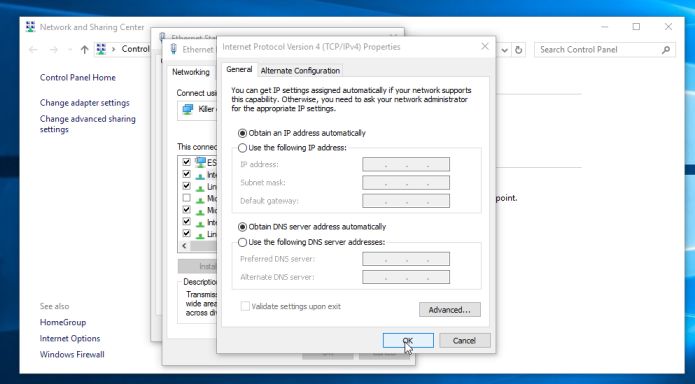
STEP 3: Reset your browser to default settings
- Internet Explorer
- Mozilla Firefox
- Google Chrome
You can reset Internet Explorer settings to return them to the state they were in when Internet Explorer was first installed on your PC.
- Open Internet Explorer, click on the “gear icon”
 in the upper right part of your browser, then click again on Internet Options.
in the upper right part of your browser, then click again on Internet Options.![Click on the Gear Icon then on Internet Options [Image: Internet Options in Internet Explorer]](https://malwaretips.com/blogs/wp-content/uploads/2014/03/Internet-Options-Internet-Explorer.jpg)
- In the “Internet Options” dialog box, click on the “Advanced” tab, then click on the “Reset” button.
![In the Advanced tab click on the Reset button [Image: Reset Internet Explorer]](https://malwaretips.com/blogs/wp-content/uploads/2014/03/Reset-Internet-Explorer.jpg)
- In the “Reset Internet Explorer settings” section, select the “Delete personal settings” check box, then click on “Reset” button.
![Click on the Reset button to revert IE to its default settings [Image: Reset Internet Explorer to its default settings]](https://malwaretips.com/blogs/wp-content/uploads/2014/03/reset-button-Internet-Explorer.jpg)
- When Internet Explorer has completed its task, click on the “Close” button in the confirmation dialogue box. You will now need to close your browser, and then you can open Internet Explorer again.
![Click on the Close button [Image Reset Internet Explorer settings]](https://malwaretips.com/blogs/wp-content/uploads/2014/03/Close-button-Reset.jpg)
STEP 4: Scan your computer with Malwarebytes Anti-Malware
Malwarebytes Anti-Malware’s industry-leading anti-malware and anti-spyware scanner detects and removes malware like worms, Trojans, rogues, spyware, bots, and more. It is important to note that Malwarebytes Anti-Malware will run alongside antivirus software without conflicts.
- You can download download Malwarebytes Anti-Malware from the below link.
MALWAREBYTES ANTI-MALWARE DOWNLOAD LINK (This link will open a new web page from where you can download “Malwarebytes Anti-Malware”) - Once downloaded, close all programs, then double-click on the icon on your desktop named “mbam-setup” to start the installation of Malwarebytes Anti-Malware.
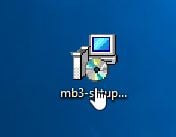
You may be presented with a User Account Control dialog asking you if you want to run this file. If this happens, you should click “Yes” to continue with the installation.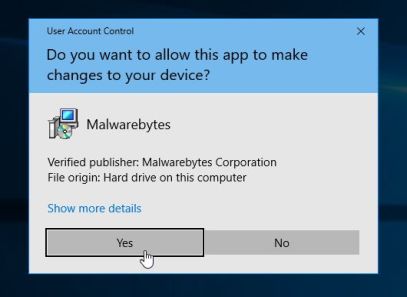
- When the installation begins, you will see the Malwarebytes Anti-Malware Setup Wizard which will guide you through the installation process.
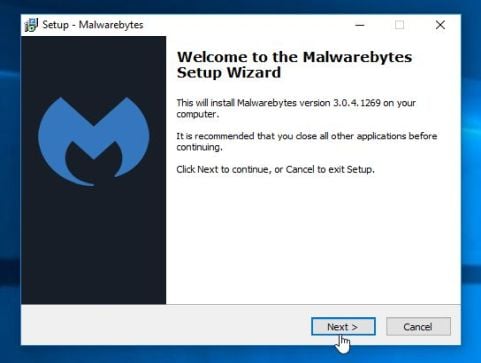
To install Malwarebytes Anti-Malware on your machine, keep following the prompts by clicking the “Next” button.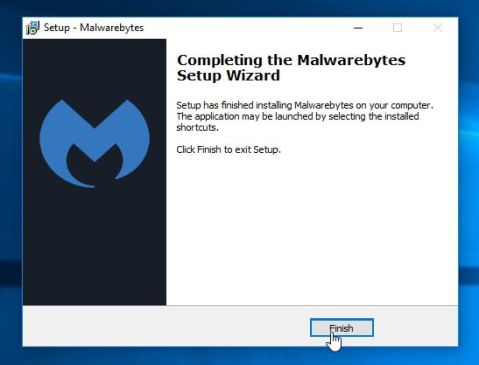
- Once installed, Malwarebytes Anti-Malware will automatically start and will update the antivirus database. To start a system scan you can click on the “Scan Now” button.
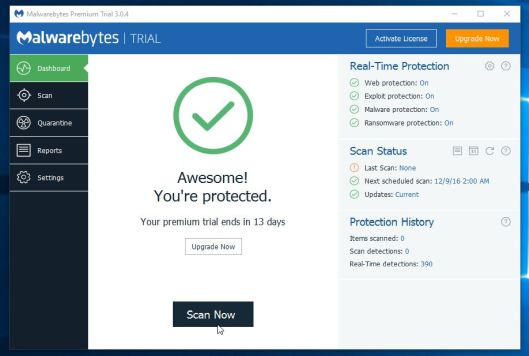
- Malwarebytes Anti-Malware will now start scanning your computer for malware. When Malwarebytes Anti-Malware is scanning it will look like the image below.
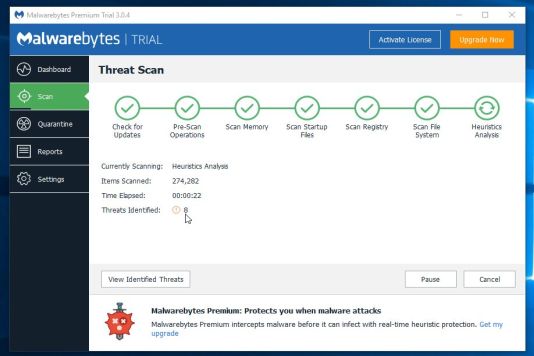
- When the scan has completed, you will be presented with a screen showing the malware infections that Malwarebytes Anti-Malware has detected. To remove the malicious programs that Malwarebytes Anti-malware has found, click on the “Remove Selected” button.
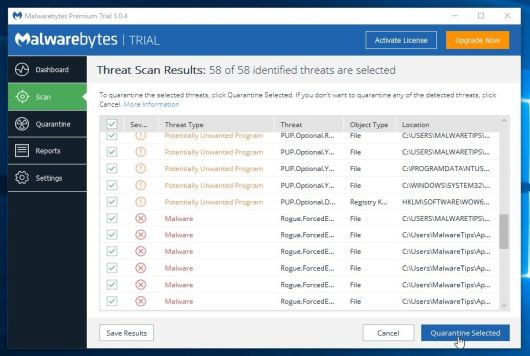
- Malwarebytes Anti-Malware will now quarantine all the malicious files and registry keys that it has found. When removing the files, Malwarebytes Anti-Malware may require a reboot in order to remove some of them. If it displays a message stating that it needs to reboot your computer, please allow it to do so.
STEP 5: Scan your computer with HitmanPro
HitmanPro finds and removes malware, adware, bots and other threats that even the best antivirus suite can oftentimes miss. It’s designed to run alongside your antivirus suite, firewall and other security tools.
- You can download HitmanPro from the below link:
HITMANPRO DOWNLOAD LINK (This link will open a new web page from where you can download “HitmanPro”) - Double-click on the file named “HitmanPro.exe” (for 32-bit versions of Windows) or “HitmanPro_x64.exe” (for 64-bit versions of Windows).

Click on the “Next” button, to install HitmanPro on your computer.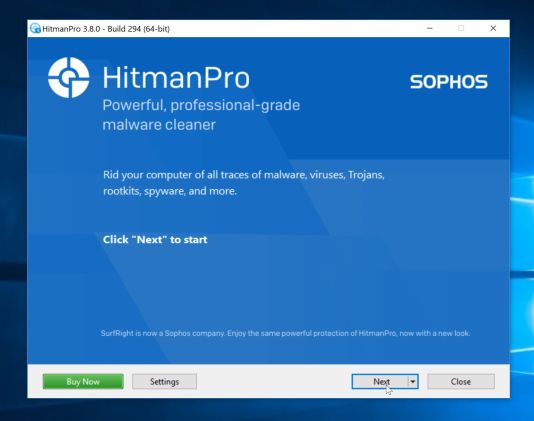
- HitmanPro will now begin to scan your computer for malware.
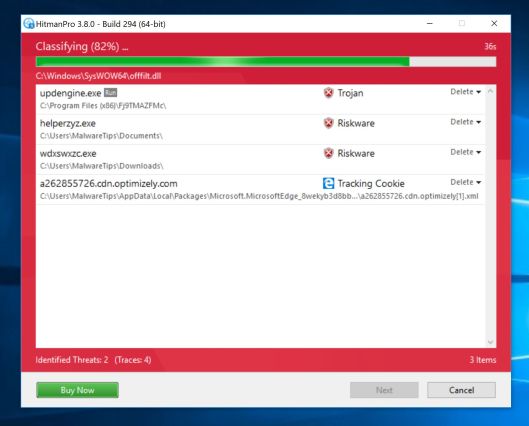
- When it has finished it will display a list of all the malware that the program found as shown in the image below. Click on the “Next” button, to remove malware.
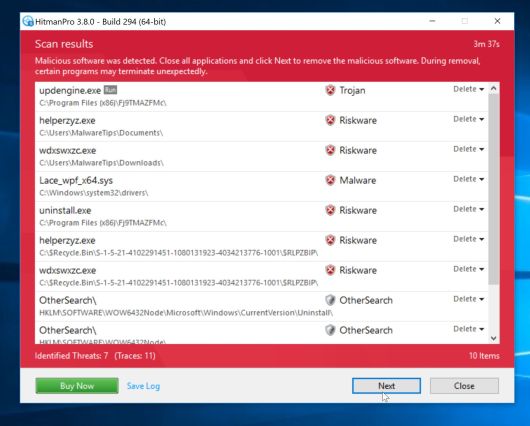
- Click on the “Activate free license” button to begin the free 30 days trial and remove all the malicious files from your computer.
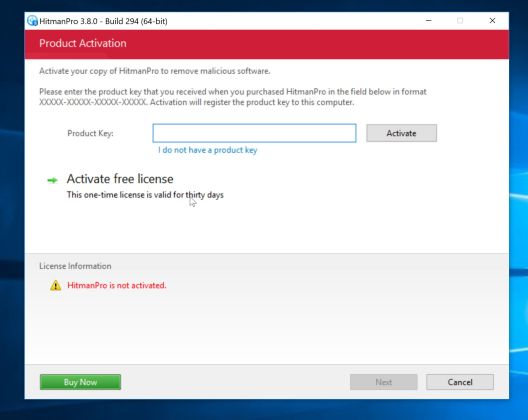
(OPTIONAL) STEP 6: Scan your computer with Zemana AntiMalware
Zemana AntiMalware is a powerful anti-malware software which can detect a wide range of malware.
This step should be performed only if your issues have not been solved by the previous steps.
This step should be performed only if your issues have not been solved by the previous steps.
- You can download Zemana AntiMalware from the below link:
ZEMANA ANTIMALWARE DOWNLOAD LINK (This link will start the download of “Zemana AntiMalware”) - Double-click on the file named “Zemana.AntiMalware.Setup.exe” to start the installation of Zemana AntiMalware.
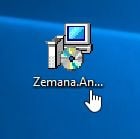
You may be presented with a User Account Control dialog asking you if you want to run this file. If this happens, you should click “Yes” to continue with the installation.
- Click on the “Next” button, to install Zemana AntiMalware on your computer.
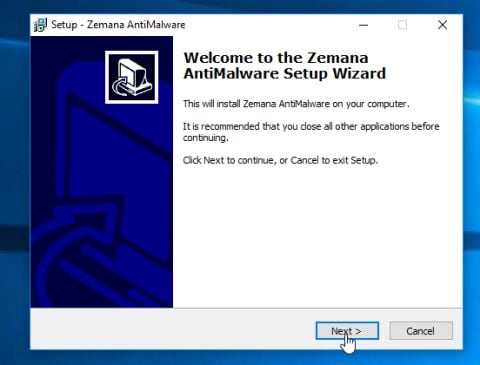
- When Zemana AntiMalware will start, click on the “Scan” button.
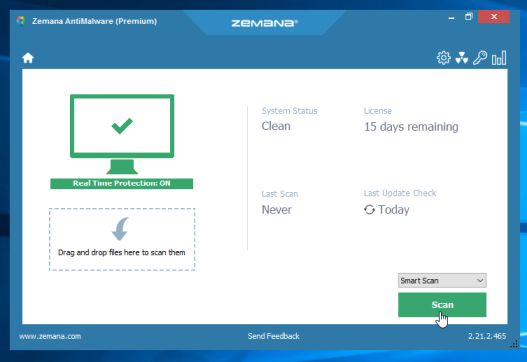
- Zemana AntiMalware will now scan computer for malicious files. This process can take up to 10 minutes.
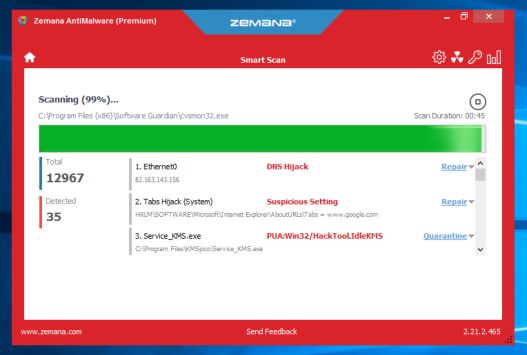
- When Zemana AntiMalware has finished it will display a list of all the malware that the program found. Click on the “Next” button, to remove the malicious files from your computer.
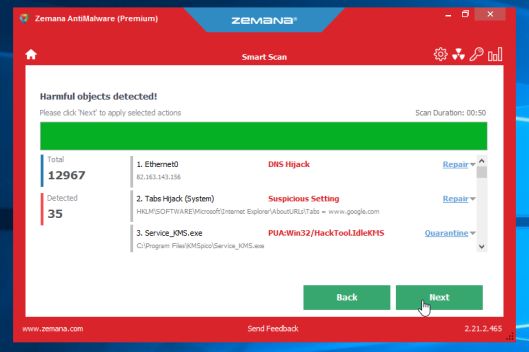
Zemana AntiMalware will now remove all the detected malicious files and at the end a system reboot may be required to remove all traces of malware.
Your computer should be malware free and have an internet connection.
If you are still experiencing problems while trying to remove malware from your machine, you can ask for help in our Malware Removal Assistance forum.
If you are still experiencing problems while trying to remove malware from your machine, you can ask for help in our Malware Removal Assistance forum.
No comments:
Post a Comment